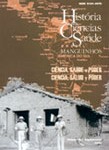Feb 2015
Vivian Mannheimer | Blog HCS-Manguinhos
Five scientists of different backgrounds gathered on Thursday (February 12) in the Brazilian Academy of Sciences to discuss the water crisis that affects Southeast Brazil, including Rio de Janeiro and São Paulo. They accused the concerned authorities of inaction and of not being transparent with the population about the seriousness of the crisis.
Three months ago, 16 scientists of the Brazilian Academy of Sciences sent a letter to federal authorities analyzing the impact of this water crisis and listing possible actions to address the problem. The document called “São Paulo Charter” calls for changes in management and indicates the risk of social unrest.
“They have to do what (Winston) Churchill (former Prime Minister of the United Kingdom) did during the II World War, that is, inform the population that thee crisis is very serious,” said José Galizia Tundisi, member of the Brazilian Academy of Sciences. Tundisi also explained that the letter was delivered in November and they haven’t received any reply so far.
According to the biologist Sandra Azevedo, director of the Biophysics Institute Carlos Chagas Filho (UFRJ), there is “an almost insurmountable barrier” between the scientific community and authorities, which prevents the transfer of scientific knowledge from academic circles to the decision makers.
“In the election run there was not a serious debate about this crisis. The candidates just ignored a crisis that was already obvious,” said her. According to her, it was clear from the beginning of 2014 that there wasn’t enough water to keep the reservoirs.
The absence of rain in the Southeast Brazil, especially in São Paulo, associated with high temperatures in recent months, has meant that the lack of water in reservoirs has intensified. The crisis began in Sao Paulo, where hundreds of thousands of residents have been affected by frequent cuts in water supplies, but the situation is also worrying in other states, such as Rio de Janeiro and Minas Gerais.
In São Paulo The city’s Cantareira reservoir system, which serves over eight million people, has now dropped to 5.2% of its capacity despite recent rain. In Rio de Janeiro state, the main water reservoir has dropped to level zero for the first time since it was built. The Brazilian Southeastern region has been suffering its most severe drought in eight decades, and critics say poor planning has made a bad situation worse.
Some proposals to tackle the crisis
In the press conference in the Brazilian Academy of Sciences, Paulo Canedo, who heads the Hydrology Laboratory of Coppe (UFRJ), suggests, for example, the introduction of targets for the Water State Company (CEDAE) aiming to reduce treated water losses, which today is up to 32%, mainly through leeks due to old plumbing. In Germany, this loss corresponds to 10% of the clean water.
The Brazilian Academy of Sciences recommends a 15% reduction in water and electricity consumption to prevent the worsening of the crisis. Another concern, as showed by the scientists, is the risk of “social unrest”, if the drought began to be understood as something related to water and food shortage.
According to José Galizia Tundisi, member of the Brazilian Academy of Science, this crisis is not just a supply problem. The crisis is much broader and needs a drastic change in the governance of water. The sewage water treatment and its reuse was one of the proposed solutions to increase the water supply.
Risk to energy sector
The water shortage in Brazil stokes worries about the energy sector. Around 80% of the Brazilian energy is generated by hydropower. Nowadays, with the water crisis this rate reaches around 70%.
The energy generation is completed mainly by thermal power, an expensive and polluting source of energy. The engineer Luiz Pinguelli Rosa, director of the Energy Planning Program of Coppe (UFRJ ) explained that these thermal power plants were made to be used only in emergencies, but in 2015 we will depend on them.
“The situation is extremely serious. The risk of an energy crisis this year is 7%, which is a quite high rate”, pointed out Pinguelli.
Health risks
Possible causes
Some specialists relate the current drought in São Paulo and Rio de Janeiro to the Amazon deforestation. However, the meteorologist José Marengo don’t fully agree with these interpretations, considering them “reckless”. According to Marengo, the drought in Southeast Brazil was cause by a phenomenon called atmospheric blocking, kind of a hot air bubble, in which the humidity coming from Amazon cannot enter. Marengo says that this phenomenon was responsible for last summer’s lack of rain, which caused the current water shortage.
“What we still don’t know is why this phenomenon that usually lasts 5 days lasted 45 days. A year ago we knew already that we were going to have problems with water. If we had a plan the scenario now would be much better ,” concluded Marengo.











